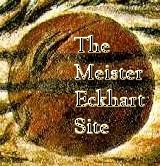|
|
||
 |
Meister Eckhart Home / Works by Meister Eckhart - Quotes / Inspired by Eckhart / Studies / The Papal Condemnation / Mail & Announcements / Links / Books |
M. LAISTNER
Knowledge of Greek in Western Europe during the earlier Middle Ages
Chapter 10 (The Study of Greek) of Laistner's, Thought & Letters in Western Europe - A.D. 500 to 900, N.Y. 1931, pp. 238-250
Page 5
The chief literary figure in St Gall in the later ninth century was Notker the poet, nicknamed Balbulus (the stammerer). His knowledge of Greek was, like that of most of his contemporaries, quite superficial, consisting of some liturgical terms and perhaps a few conversational phrases derived from glossaries, Greek liturgical pieces in manuscripts or Biblical commentaries. To state that he interspersed Greek words in his Latin, as some writers have said,[10] is contrary to fact. In his poems and in the forty sequences which, according to the latest editor, were certainly composed by Notker himself, there are fewer than a dozen Greek words and these, with one exception, he could have found in a glossary. The exception is spermologos which, together with the interpretation of the word, Notker found in Bede's commentary on Acts.[11] The existence of a group of monks, contemporary with Notker and nicknamed Ellenici fratres, cannot be regarded as certain, since there is doubt about the authorship of the so-called Epistle to Lantbert in which alone they are named.[12] Ermenrich, who was for some time at the monastery of Ellwangen and ended his career as bishop of Passau (865-74), had studied at Fulda, Reichenau, and St Gall. Moreover, it has been shown that all the works, sacred and profane - and there are more than thirty of them - which he used or quoted in his long and exceedingly pedantic Epistle to Grimald were available in the libraries of the two last-named abbeys. It was probably also at St Gall that he dabbled in Greek: His incursions into that language, in so far as they do not merely reproduce his sources, are such as he could have derived from bilingual glossaries and phrase-books.[13]
West of the Rhine there were several centres of Irish influence - Liege in the time of Sedulius, Laon, Rheims, while John Scotus taught there - and it is in these that we find some evidence for the active study of Greek. A smattering may have passed also through Heiric's influence to Auxerre, while Stavelot, or at any rate one of its teachers, Christian, may well have had contacts with Sedulius and Liége. A Greek Psalter, now in the library of the Arsenal in Paris (MS. 8047), was copied by Sedulius, as we learn from the Greek subscription; "I, Sedulius Scottus, wrote it." The surviving specimens of Graeca by Martin of Laon, in his Scholica Graecarum Glossarum and in a manuscript now in the municipal library at Laon (MS. 444), suggest that even the Irish for the most part lacked a thorough understanding of the language.[14] Yet these efforts at mastering it were decidedly more ambitious than those of their pupils. It was certainly a task of some difficulty to render the Greek quotations in Priscian into Latin, especially the Homeric tags. It must be admitted that Martin often blundered badly. But a generation later Remigius, the pupil of Heiric, to judge by his commentaries on Martianus and on Boethius' Consolatio, knew even less.